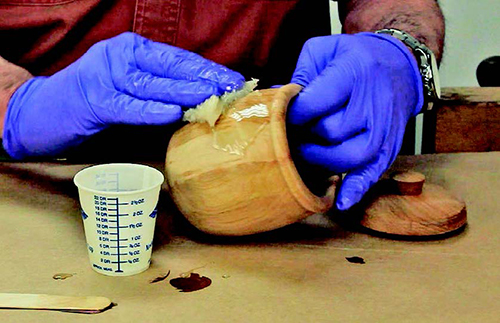
I went back to Ohio for Thanksgiving and found a decent size burl on a fallen branch from what I think is an elm (I am still not too great at recognizing some trees once all the leaves have fallen). I plan on making a kuska out of this if I don’t mess it up in the process. Once I started working on it I turned up a pretty big rotten spot in the middle. I have cleared most of the rotten section out and think/hope I should still have enough good wood to work with. I know burls form from diseased or damaged parts of the tree so maybe this is common.
My question is this: since I plan on making this into a drinking vessel, do I need to be concerned with this rotten section even if I am able to clean all the rotten wood out? I am pretty sure there is an elm disease going around and wouldn’t be surprised if this is the cause of this branch falling in the first place. I know that historically kuskas were boiled in salt water for several hours. Would this help preserve the wood or stop the rotten section from spreading? – Easydoesit
Tim Inman: I’m a furniture guy, not a biologist or a med tech. So…I think the Dutch Elm disease is probably limited to horticulture and is not something you need to worry about in the animal kingdom. Simple toxicology research should quickly guide you if there are issues. The Internet is a great tool. Taste or “off” flavors would be my bigger concern. I’m betting the saltwater treatment was done for a reason. I’m also betting the saltwater treatment pulled out the bitters and other flavors the wood might have contributed from natural resins and sap remains. I’d go with the traditional saltwater approach.





